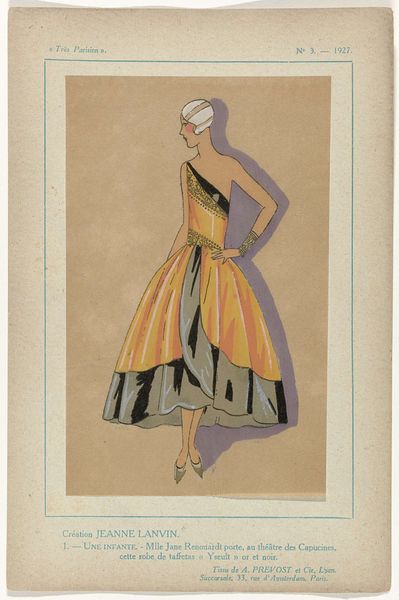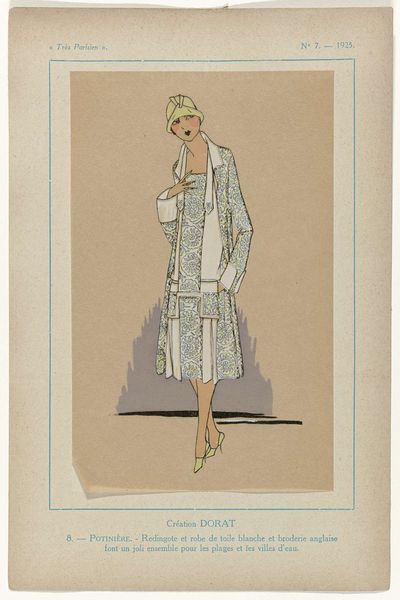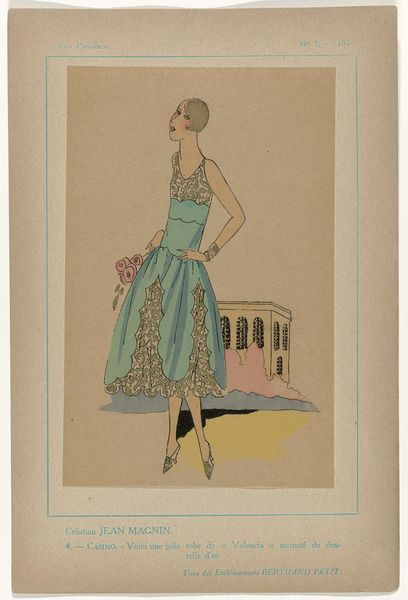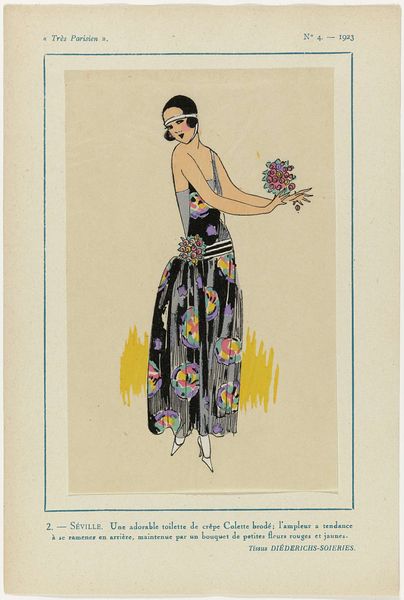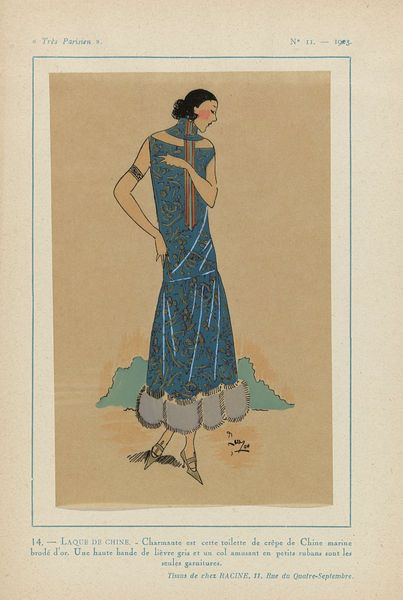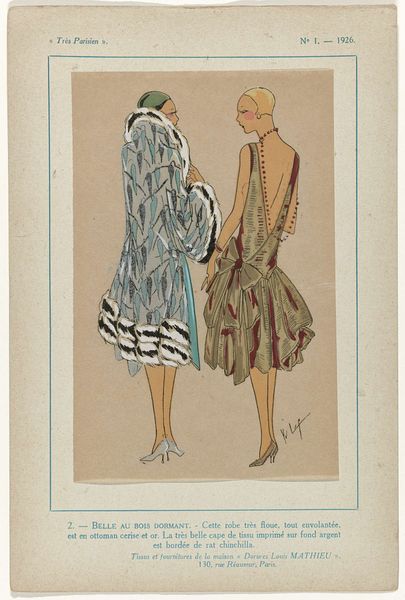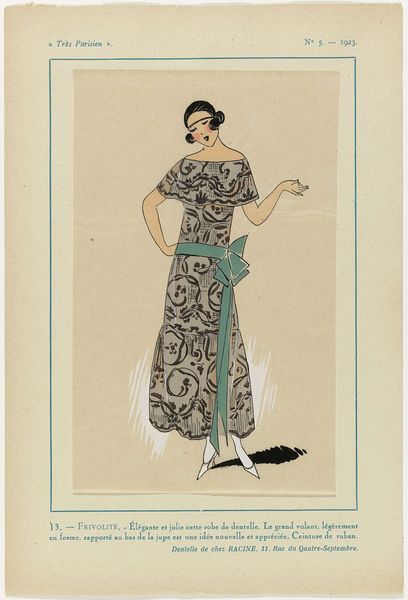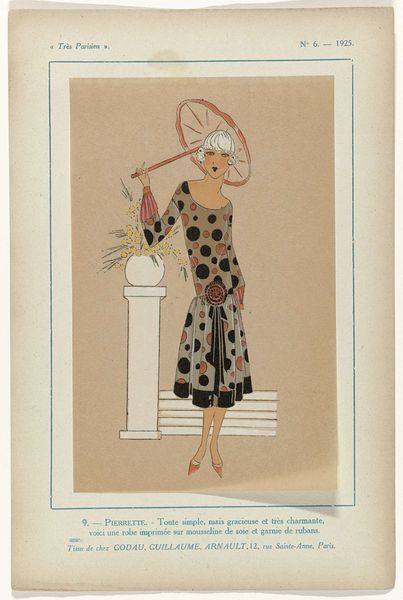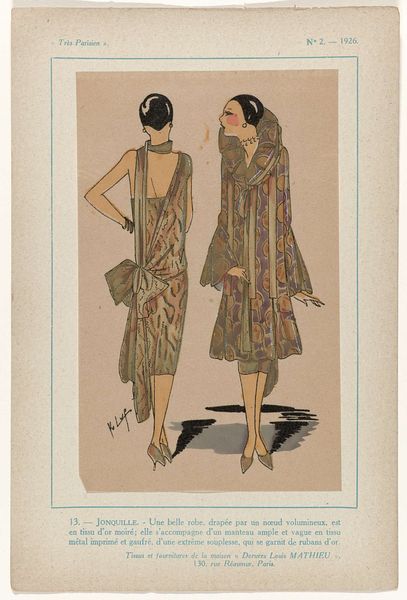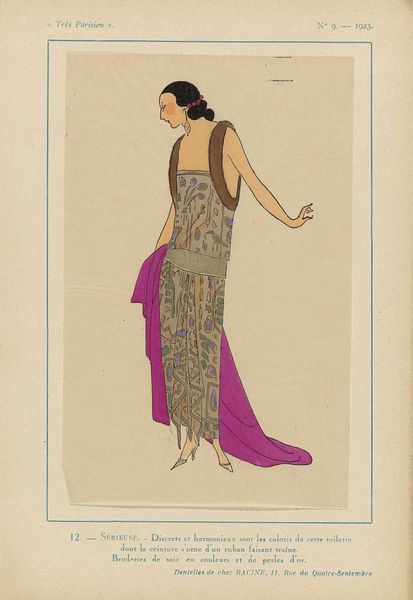
Dimensions: height 195 mm, width 120 mm, mm
Copyright: Rijks Museum: Open Domain
Editor: This watercolor illustration, “Très Parisien, 1926, No. 1, Pl. 15: Création CYBER - SYMPHONIE,” is from 1926, and currently held in the Rijksmuseum. The illustration presents a flapper-style dress, the color palette is pale and delicate, and the dress seems light and flowing, perhaps of silk or crepe. The print is described as Delft-inspired. What can you tell me about the context of this artwork? Curator: Let’s consider this image within its means of production, which include labor, design, material, and social networks. Here we have an illustration for a dress design, created using watercolors, which suggests it was relatively quick and easily reproducible, geared for widespread consumption, even before the age of mass-printing and photography. Editor: The text indicates “crêpe de Chine imprimé ‘Delft’". How does that affect your perception? Curator: It emphasizes the interconnectedness of industry and artistic expression. The textile industry sought designs that were modern while simultaneously referencing traditional designs, thereby boosting perceived value, appealing to both current trends and the heritage of craftsmanship, indicating the complex relationship between industry, consumerism and class aspirations. The watercolor medium itself democratized representation. Editor: That makes sense. How can the artist's choice of materials reveal anything more about the fashion design? Curator: It emphasizes the accessibility and dissemination of fashion trends. Unlike oil paintings intended for wealthy patrons, watercolors allowed for reproduction and distribution through publications, reaching a broader audience eager to participate in Parisian style and aspirations. This links directly to changes in both available materials, and in new attitudes toward fashion consumption that this period embraced. The dress is clearly a site where material, labour and aspirations meet. Editor: So, it's not just about the dress itself, but also about how it was made and how it reached its audience. Thank you! Curator: Indeed! Examining art this way can unearth fascinating details about our material past and how intertwined the world of making and producing art has always been.
Comments
No comments
Be the first to comment and join the conversation on the ultimate creative platform.
